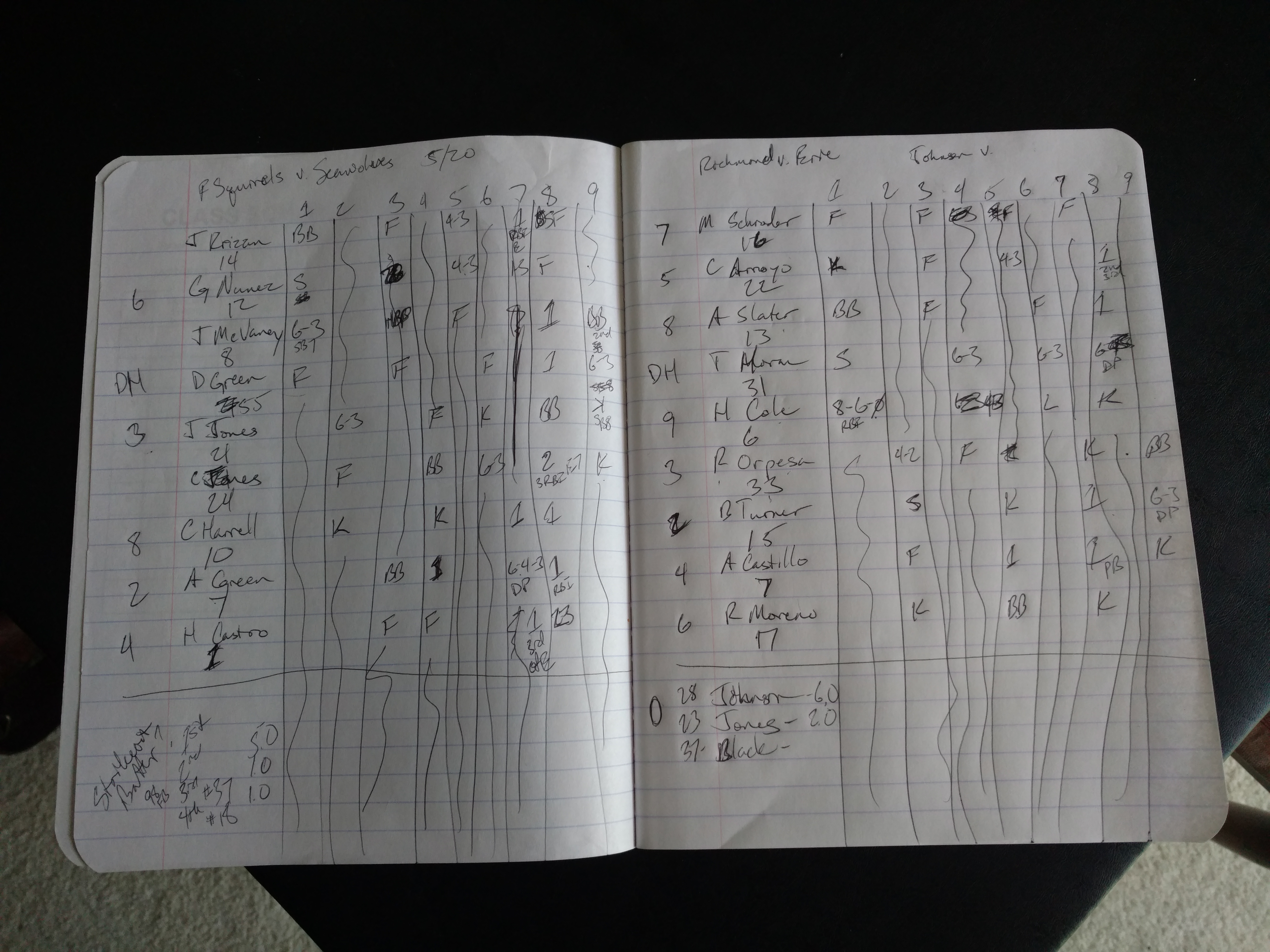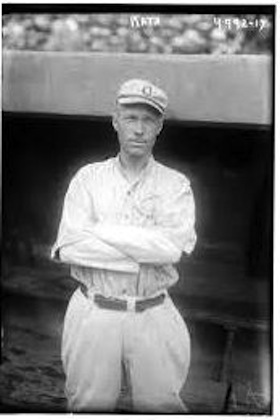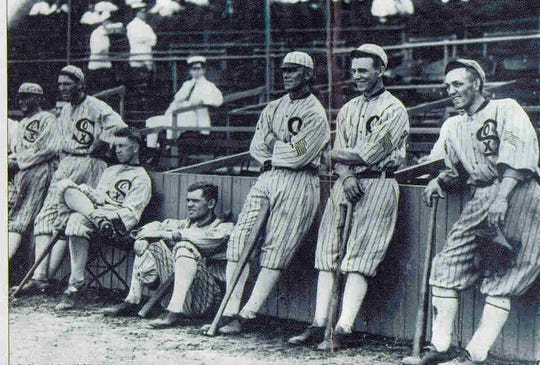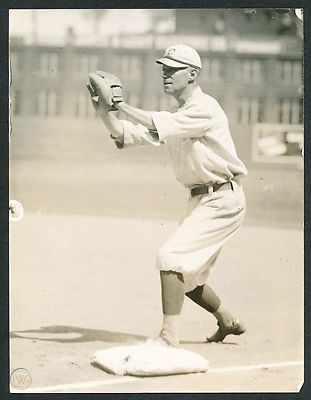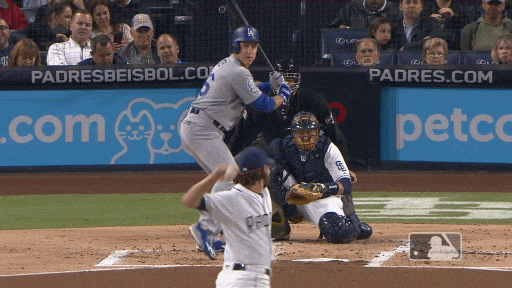Tagged: HBP
Missing #4- Kid Elberfeld
You can dedicate your life to baseball and have a dramatic impact on people and the game. However, this does not mean you are destined for Cooperstown. Norman Arthur Elberfeld grew up in Cincinnati, cheering for the Reds and made a name for himself on local diamonds. The Tabasco Kid, or Kid, played primarily Shortstop for 14 seasons with six teams: Philadelphia Phillies (1898), Cincinnati Reds (1899), Detroit Tigers (1901-1903), New York Highlanders (1903-1909), Washington Nationals (1910-1911), and Brooklyn Dodgers (1914). He spent the 1908 season as the Player-Manager for the New York Highlanders, guiding them to a 27-71 record, .276 WL%. Elberfeld was a much better Major League player than manager.
Elberfeld appeared on the 1936 Hall of Fame ballot. This came after a career in which he played in 1,292 Games, scored 647 Runs, collected 1,235 Hits, including 169 Doubles, 56 Triples, 10 Home Runs, 535 RBI, 213 Stolen Bases, drew 427 Walks, 166 Strikeouts, posted a .271 BA, .355 OBP, .339 SLG, .694 OPS, and 106 OPS+. Elberfeld turned Hit By the Pitch into an art form. His 165 Hit By Pitches still ranks 19th all time.
Defensively, Elberfeld played in 1,265 Games, made 1,196 Starts, 1,135 Complete Games, 10,835 Innings, had 6,993 Chances, made 2,681 Putouts, with 3,774 Assists, committed 538 Errors, .923 FLD%, 5.36 RF/9, and 5.10 RF/G. He was fearless, never shying away from confrontation. Elberfeld wore a whalebone shin guard after being spiked multiple times while turning Double Plays. His aggression towards opposing players and umpires, leading to multiple injuries, fights, and suspensions.
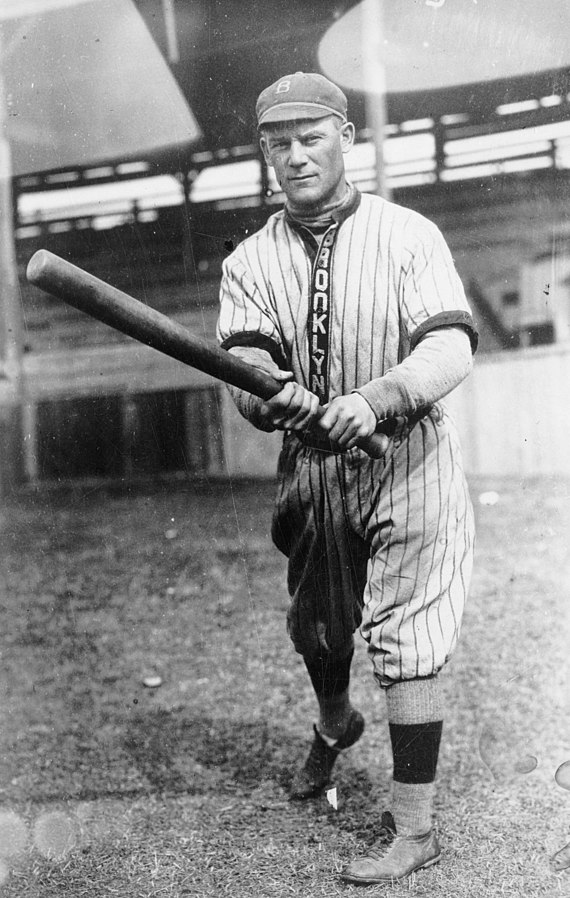
The best season of Elberfeld’s career came with the 1901 Detroit Tigers. He played in 121 Games, scored 76 Runs, collected 133 Hits, including 21 Doubles, 11 Triples, 3 Home Runs, 76 RBI, 23 Stolen Bases, drew 57 Walks, 18 Strikeouts, with a .308 BA, .397 OBP, .428 SLG, .825 OPS, and 125 OPS+. Elberfeld posted career bests in Triples, Home Runs, RBI, BA, SLG, and OPS. Despite the great start, Elberfeld failed to build a Hall of Fame career.
The game continues to change so it is only appropriate to compare Elberfeld to his contemporaries who were elected to Cooperstown. There are 26 Hall of Fame Shortstops, of which six played during the Dead Ball Era. The average Dead Ball Era Shortstop played 19 seasons, 2,078 career Games, scored 1,253 Runs, collected 2,286 Hits, including 369 Doubles, 143 Triples, 47 Home Runs, 1,131 RBI, 463 Stolen Bases, drew 633 Walks, 499 Strikeouts, with a .290 BA, .350 OBP, .388 SLG, .738 OPS, 113 OPS+, and 69.4 WAR. These Shortstops played their way into the Hall of Fame. Kid Elberfeld did not. He was only better by having 333 fewer Strikeouts and a .005 higher OBP. It is not a close comparison.
Kid Elberfeld was a true baseball man, spending time as a coach, scout, mentor, and teacher. He was good for the game, but not a Hall of Famer. On the 1936 ballot, Elberfeld received 1 vote, 0.4%. He was tied for the 39th most votes on the ballot. He would appear on the Hall of Fame ballot five times, peaking with 0.8% in both 1938 and 1945. The Hall of Fame voters got it right. Kid Elberfeld does not deserve to be enshrined in Cooperstown. Sometimes the value of an honor is shown through those not receiving it.
DJ
Score Book
Scoring a baseball game requires paper, something to write with, following the action on the field, and knowing what to write on the score sheet. We enjoy everything related to baseball, not just watching and playing. We indulge in baseball books, poems, music, and films. In reviewing them we cannot use a normal 1 to 10 ratings system. Even this we must make about baseball.
Here is our ratings system to understand our opinions about our previous reviews and moving forward.
- Golden Sombrero
- Strikeout
- Walk
- Hit By Pitch
- Single
- Double
- Triple
- Home Run
- Grand Slam
- Walk-Off Grand Slam
The is no wrong way to score a baseball game, so long as you can read and understand what happened in the game. (The Winning Run/ BL)
Here are our past reviews and ratings.
Books
- The Greatest Baseball Stories Ever Told: Thirty Unforgettable Tales from the Diamond by Jeff Silverman (Single)
- The Baseball: Stunts, Scandals, and Secrets Beneath the Stitches by Zack Hample (Double)
- Ball Four by Jim Bouton (Home Run)
- A Day in the Bleachers by Arnold Hano (Home Run)
- Ted Williams: The Biography of an American Hero by Leigh Montville (Double)
- The Way of Baseball: Finding Stillness at 95 MPH by Shawn Green and Gordon McAlpine (Double)
- Ballplayer by Chipper Jones and Carroll Rogers Walton (Double)
- They Called Me God: The Best Umpire Who Ever Lived by Doug Harvey and Peter Golenbock (Grand Slam)
- The Best Team Money Can Buy: The Los Angeles Dodgers’ Wild Struggle to Build a Baseball Powerhouse by Molly Knight (Home Run)
- Bottom of the 33rd: Hope, Redemption, and Baseball’s Longest Game by Dan Barry (Triple)
- The Only Rule Is It Has To Work: Our Wild Experiment Building a New Kind of Baseball Team by Ben Lindbergh and Sam Miller
- The Unforgettable Season by G.H. Fleming (Double)
- The Mick: An American Hero, The Legend and the Glory by Mickey Mantle and Herb Gluck (Triple)
- Faithful: Two Diehard Boston Red Sox Fans Chronicle the Historic 2004 Season by Stewart O’Nan and Stephen King (Triple)
- 56: Joe DiMaggio and the Last Magic Number in Sports by Kostya Kennedy (Home Run)
- Moneyball: The Art of Winning an Unfair Game by Michael Lewis (Triple)
Film
- Ken Burns’ Baseball (Home Run)
- The Only Real Game (Double)
- Ballplayer: Pelotero (Single)
Music
- My Oh My by Macklemore & Ryan Lewis (Single)
Poetry
- The Green Fields of the Mind by Bart Giamatti (Grand Slam)
Moving forward we will use this ratings system in our reviews. We do not always agree, but the scoring is the opinion of the reviewer. Everyone wants to hit a Walk-Off Grand Slam, but not everyone will. Hopefully we find our own versions of Bill Mazeroski off the diamond.
DJ
The Fix Is In
Eddie Cicotte takes the sign from Ray Schalk, winds and fires. OUCH! Cicotte drills the first Cincinnati Red, signaling the Chicago White Sox will throw the 1919 World Series. Baseball fans know what happened next. Eight White Sox players were accused, brought to trial, found not guilty, and then banned by new Baseball Commissioner Kenesaw Mountain Landis. Chick Gandil, Eddie Cicotte, Happy Felsch, Shoeless Joe Jackson, Fred McMullin, Swede Risberg, Buck Weaver, and Lefty Williams were placed on the ineligible list, where they have remained ever since.
The Black Sox scandal overshadowed the 1919 World Series. The Reds were largely ignored. So too was Cincinnati Second Baseman Morrie Rath who received the painful signal. Rath played for four teams in six seasons between stents in the Minors from 1909 to 1920. Connie Mack bought Rath from the Reading Pretzels of the Tri-State League on August 21, 1909. A month later, Rath went hitless in his Major League debut against the Cleveland Naps. On July 23, 1910, after playing just 18 games for Philadelphia, Rath and a Player To Be Named Later, Shoeless Joe Jackson, were traded to Cleveland for Bris Lord. Rath played 24 games for the Naps before his demotion to the Baltimore Orioles of the Eastern League. He stayed in Baltimore through the 1911 season, when the White Sox selected him in the Rule 5 Draft. He played 249 Games for Chicago before he was sold to the Kansas City Blues of the American Association in August 1913. He was again traded to the Salt Lake City Bees for Dutch Ruether in November 1915. The Cincinnati Reds selected Rath in the 1917 Rule 5 Draft. He finally joined the Cincinnati Reds in 1919 after spending 1918 in the Navy.
Morrie Rath was the recipient of the most famous Hit By Pitch in baseball history. (www.sabr.com)
Rath played 565 Games for the Philadelphia Athletics, Cleveland Naps, Chicago White Sox, and Cincinnati Reds. He posted a career .254 BA, .342 OBP, .285 SLG, 521 Hits, 36 Doubles, 7 Triples, 4 Home Runs, 92 RBI, 291 Runs scored, 83 Stolen Bases, 258 Walks, 112 Strike Outs, and 14 Hit By Pitch. Defensively, Rath was a good, not great, Second Baseman. In 4,518 Innings he had 2,817 Chances, made 1,167 Putouts, 1,565 Assists, turned 200 Double Plays, 85 Errors, for a .970 Fielding %. Baseball history is littered with players like Rath. Playing for multiple teams with a few successful seasons, before fading into history.
October 1, 1919 was Rath’s most memorable game. The Reds hosted the heavily favored White Sox at Redland Field in Game 1 of the World Series. Reds Manager Pat Moran inserted Rath in the leadoff spot against Eddie Cicotte, who was 29-7 with a 1.82 ERA in the Regular Season. Rath waited as Cicotte fired his first pitch. SMACK! Rath trotted to First. Jake Daubert followed, singling to Right Center, Rath took third. Heinie Groh then flew out to Left, allowing Rath to score. 1-0 Reds.
The Black Sox lost the 1919 World Series and were then banned from baseball. (www.worthpoint.com)
Reds pitcher Duth Ruether allowed an unearned run in the Second. Cicotte walked Ruether to lead off the Bottom of the Third. Rath dropped a sacrifice bunt to Cicotte moving Ruether to Second. However, Daubert and Groh failed to drive Ruether in, stranding him at Second. The game remained tied 1-1.
The wheels came off for Chicago with two outs in the Bottom of the Fourth. Runner on first when Greasy Neale reached on an infield hit. Ivey Wingo then singled to Right, scoring Larry Kopf. Dutch Ruether tripled to Left Center, scoring Neale and Wingo. Rath Doubled to Left, scoring Ruether. Daubert singled to Right scoring Rath. Chicago’s frustrated Manager Kid Gleason pulled Cicotte for Roy Wilkinson who retired Groh. 6-1 Reds.
Morrie Rath was a good player that would have faded into history if Eddie Cicotte did not hit him to begin the 1919 World Series. (www.cincinnati.com)
Rath lined into an inning ending double play in the Sixth and grounded out to Short for the second out of the Eighth. The Reds won Game 1, 9-1. Rath went 1 for 3, 1 Double, 1 RBI, 2 Runs scored, 1 Hit By Pitch, and 1 Sac Bunt. Defensively he had 4 Putouts and 2 Assists. In Rath’s only Fall Classic, he played all 8 Games, with a .226 BA and .333 OBP. He collected 7 Hits, 1 Double, 5 Runs scored, 2 RBI, 4 Walks, 2 Stolen Bases, and 1 Hit By Pitch. In the field, he played 72 innings, in 40 Chances he had 21 Putouts, 17 Assists, 2 Errors, and 4 Double Plays.
Morrie Rath played his final Major League game a year after the 1919 World Series. He went 1 for 5 in a 6-3 Reds defeat on the final day of the season. Cincinnati finished third in the National League, 10.5 games behind the Brooklyn Robins. On January 4, 1921, Rath was one of three Players To Be Named Later and $10,000 traded to the Seattle Rainiers of Pacific Coast League for Sam Bohne. He ended his career playing 124 games for the San Francisco Seals in 1921. After retiring from baseball, Rath returned to suburban Philadelphia to run a sporting goods store.
DJ
Here Comes The Pain!!!
People naturally try to avoid things they know will cause them pain. You only touch a hot stove once to understand it is not something you want to experience again. Getting hit by a baseball is not something people enjoy, it hurts. Baseballs can leave nasty bruises and broken bones if they hit a person just so. A batter’s natural reaction is to jump out of the way of the baseball when they believe the pitch is going to hit them. This is part of the reason most people have difficulty hitting a curveball. Your mind is telling you of the impending danger, yet you also know you need to hit the ball. The vast majority of people are never able to conquer this fear, stay in the box, and drive a curveball.
Baseball is a hard game played by hard people. It takes a toll on your body. Among those who are able to withstand the fear induced by curveballs is an even more select group, these players are those who turn getting hit by a pitch into an art form and a weapon. A run counts the same if you hit a home run or if you get hit by a pitch and then come around to score. These brave souls sacrifice their bodies to get on base. They are sacrificing themselves for the good of the team.
The official rule governing the hit by pitch (HBP), 5.05(b)(2), states:
“(b) The batter becomes a runner and is entitled to first base without liability to be put out (provided he advances to and touches first base) when:
(2) He is touched by a pitched ball which he is not attempting to hit unless (A) The ball is in the strike zone when it touches the batter, or (B) The batter makes no attempt to avoid being touched by the ball.”
It is the second part of the rule, “The batter makes no attempt to avoid being touched by the ball”, which often leads to heated debates about whether a batter attempted to avoid being hit by the pitch. Ultimately it is a judgement call by the umpire. This has lead to some players becoming creative in an attempt to be hit by the pitch. Some players are not afraid to be hit by a pitch and will subtly go out of their way to get hit.
The hit by pitch king is Hughie Jennings. He was hit by a pitch 287 times during his career. Jennings led the National League in HBP five consecutive seasons, 1894-1898. He was hit 51 times during the 1896 season, which remains the single season record. Jennings followed up his record setting season by being hit 46 times in 1897 and 1898, which are still the third and fourth highest single season HBP totals. Career record require longevity, Jennings played in the majors in 18 seasons, his last was in 1918 at the age of 49. However, he appeared in six or fewer games during his final six seasons, during which he had only one HBP. Jennings averaged 36 HBP per 162 games. All those bruises from being hit raised Jennings’ career OBP from .357 to .391. Was it all worth it? It is hard to judge but Jennings is forever enshrined in the Baseball Hall of Fame in Cooperstown. You be the judge.
The art of the HBP was not a weapon only during the dead ball era, it is alive and well today. Baseball could be in its Golden Age of the HBP. Eight of the top 20 in the career HBP rankings have played in Major League Baseball since 2002. The art and weaponization of the HBP was championed by Craig Biggio and today continues to be carried on by Chase Utley and Anthony Rizzo.
Chase Utley will take a pitch to the shoulder if it means getting on base. (Jenny Goldstick and Gemma Kaneko/ MLB.com)
Craig Biggio made a career out of doing whatever was necessary to win a baseball game. He willingness to transition from catching to the outfield to second base to help the team with his defense skills wherever they were needed on the diamond. When it came to the offensive side of Biggio’s game he understood his job was to get on base ahead of teammates like Jeff Bagwell. Driving the ball and hustling out of the box or using his elbow guard, and the rest of his body, to reach first base did not matter to Biggio. During his 20 year Major League career, Biggio was hit 285 times, just two behind the all time record. He led the National League five times in HBP. He was hit by a pitch 16 times per every 162 games played during his career. This durability and toughness are what helped Biggio be enshrined in the Baseball Hall of Fame.
The same sort of durability and toughness Biggio displayed throughout his Hall of Fame career is seen in Chase Utley. Utley is playing his 16th Major League season and has been hit by a pitch 200 times. He is the active leader in HBP, he ranks eighth all time, and first all time among left handed batters. Utley’s willingness to use hit body to get on base has seen him lead the National League three times in this painful category. Averaging 17 hit by pitches per 162 games played, Utley has put together a career that will get him some serious consideration for the Baseball Hall of Fame.
It hurts, but Anthony Rizzo uses hit body to get on base. (www.sportsonearth.com)
The old guard of players like Biggio and Utley have shown the younger generation of players the value of using their body to reach first base. Cubs first baseman Anthony Rizzo is positioning himself to make a legitimate run at the upper echelons of the record book. In his eighth Major League season, Rizzo has already been hit by 106 pitches, which ties him with Barry Bonds for 74th all time. He is currently ranked 22nd all time for left handed batters. Rizzo could threaten to break into the top 50 all time by the end of this season. He is averaging 18 hit by pitches per 162 games played, and as he enters his prime Rizzo is demonstrating his durability and toughness. Rizzo will turn 29 in August, he should have many more seasons of practicing this painful art ahead of him.
There is an art to getting hit by a pitch. Sometimes it is unavoidable, other times a batter attempts to avoid a fastball to the head. Some players willingly stick a leg or shoulder out on a hanging curveball to reach first base. No one enjoys unnecessary pain. However, baseball is a hard game played by hard people, at every levels. The willingness to endure pain to help the team win is a skill few possess. There are a select few who are willing and able be hit by a pitch if it means helping the team. Rizzo and the next generation of HBP artists need to remember one thing. Whatever you do, do not rub it.
DJ
